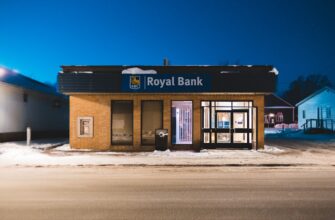Unlocking BNB Rewards with Aave Yield Farming
Yield farming has revolutionized DeFi by letting crypto holders earn passive income on their assets. Farming BNB on Aave—one of DeFi’s most trusted lending protocols—allows you to put your Binance Coin to work while maintaining liquidity. This comprehensive guide walks you through the entire process, from setup to optimization, while highlighting key risks and alternatives. Whether you’re new to DeFi or a seasoned farmer, you’ll learn actionable strategies to maximize your BNB rewards.
Why Farm BNB on Aave? Key Benefits
Aave offers unique advantages for BNB holders seeking yield:
- Dual Rewards: Earn interest on supplied BNB plus potential AAVE token incentives.
- Liquidity Flexibility: Withdraw your BNB anytime—no fixed lock-up periods.
- Security First: Audited smart contracts and $250+ million safety fund (Aave Safety Module).
- Cross-Chain Efficiency: Farm BNB on Ethereum, Polygon, or Avalanche networks via Aave v3.
Step-by-Step: How to Farm BNB on Aave
Prerequisites: MetaMask wallet, BNB tokens, and ETH/MATIC/AVAX for gas fees (depending on network).
- Bridge BNB to Desired Network
- Use Binance Bridge or Stargate to move BNB from BSC to Ethereum/Polygon/Avalanche
- Connect Wallet to Aave
- Visit app.aave.com and select your network (e.g., Polygon)
- Link your MetaMask wallet
- Supply BNB to Aave Pool
- Navigate to ‘Supply Markets’, find BNB, and click ‘Supply’
- Approve transaction and deposit desired BNB amount
- Enable Collateral (Optional)
- Toggle ‘Use as collateral’ to borrow other assets against your BNB
- Claim Rewards
- Accumulate interest in real-time; withdraw anytime via ‘Dashboard’
Maximizing Your BNB Farming Returns
- Leverage Aave v3 Efficiency Mode: Reduce borrowing costs by up to 25% when supplying multiple assets.
- Combine with Liquidity Mining: Stake aTokens in Aave’s Safety Module for extra AAVE rewards.
- Network Selection: Farm on Polygon for lower fees (~$0.01 transactions) vs. Ethereum.
- APY Tracking: Monitor rates via DeFiLlama—BNB APY fluctuates with market demand (typically 1-5%).
Critical Risks and Mitigation Strategies
- Impermanent Loss: Minimal risk since you’re only supplying BNB (not in LP pairs).
- Smart Contract Vulnerabilities: Only interact with official app.aave.com; avoid phishing sites.
- Liquidation Risk: If using BNB as collateral, maintain >65% Loan-to-Value ratio.
- APY Volatility: Diversify across stablecoin pools for balanced exposure.
Top Aave BNB Farming Alternatives
- PancakeSwap BNB Pools: Higher APY (5-15%) but higher impermanent loss risk.
- BNB Staking on Binance: Simpler (3-5% APY) but custodial and no DeFi composability.
- Alpaca Finance: Leveraged yield farming on BSC—higher rewards with amplified risk.
FAQ: Farming BNB on Aave Explained
Q: Is farming BNB on Aave safe?
A: Relatively yes—Aave is audited and battle-tested. Risks include smart contract bugs and market volatility. Never invest more than you can afford to lose.
Q: What’s the minimum BNB needed to start?
A: No minimum, but consider gas costs. On Polygon, 0.1 BNB ($30) is practical.
Q: Can I farm BNB on Aave without bridging?
A: No—Aave doesn’t support BSC. You must bridge BNB to Ethereum L2s (Polygon/Arbitrum) or Avalanche.
Q: How often are rewards distributed?
A: Interest accrues every block (~2s). Claim manually anytime or auto-compound via DeFi Saver.
Q: Do I pay taxes on farming rewards?
A: Likely yes—BNB interest is taxable income in most jurisdictions. Track transactions with Koinly or CoinTracker.
Final Tip: Start small, use hardware wallets, and revisit your strategy quarterly. As Aave upgrades (hello, GHO stablecoin!), new BNB opportunities will emerge. Happy farming!








